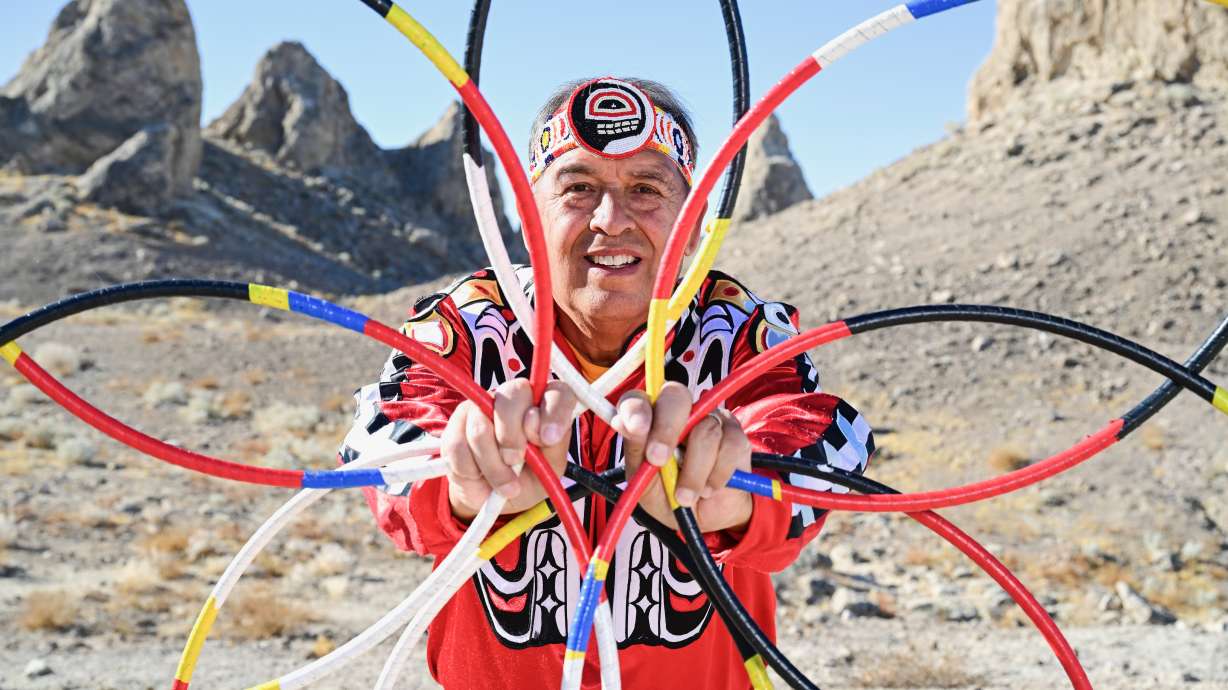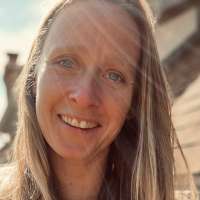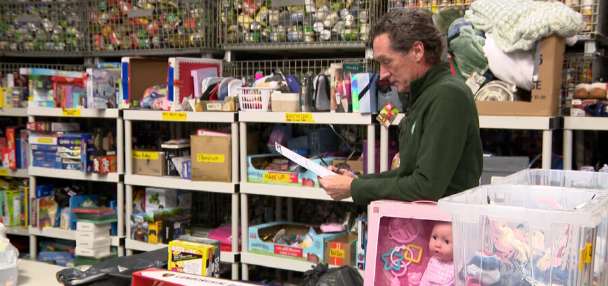Estimated read time: 6-7 minutes
- Terry Goedel, a Native American hoop dancer, shares his journey of embracing his heritage after feeling disconnected from it.
- His discovery of Native American dance sparked a deeper connection to his roots.
- Goedel now performs globally, promoting cultural awareness and encouraging others to explore their own heritage.
SALT LAKE CITY — When Terry Goedel stood in front of hundreds of students at Foxboro Elementary in North Salt Lake, there was a palpable awe. As part of his presentation, Goedel, who is a Native American hoop dancer, told a story of growing up not knowing his heritage — until one day, when he heard his mother speak a language he had never before heard.
"Hach, Hach, Moses!" he recalled her yelling across the room at a man he had never met.
Goedel was 14 years old when he first heard his mother speak her native Lushootseed tongue, which he said was both surprising and a little unnerving. Up until that point, he had spent his entire life moving around the country as the son of a U.S. Navy man, and now his family had moved to the Tulalip Reservation in northern Washington.
Hearing his mother speak her native tongue may have meant they were among friends and family, but for Goedel, it didn't feel that way. Living on the reservation meant he needed to leave what he knew behind to exist in a world where he may have looked the part, but he didn't quite fit in.
"In 1970, my mom and dad decided to move to the reservation, and I'd never been to the reservation," Goedel told KSL.com. "I'd been all around the United States, and I knew nothing about my native heritage. It was a time period when things hadn't quite turned around for anybody of color. And so, when I moved to the reservation, I was thrown into the middle. I wasn't used to being around the natives. I didn't even know that I was native, and now everybody was telling me that I was. It was really uncomfortable for me to be in that situation. … I didn't want to be on the reservation, and I didn't want to be a part of what the reservation life held for me."
Goedel also recalled being pigeonholed into stereotypes rooted in being "uneducated." Having received high grades at his previous schools — particularly in mathematics — he was now hearing things from teachers indicating "people like him" didn't graduate from high school.
He was experiencing an identity crisis at 14 while living among people who "looked like him." He recalled having an inner battle of who he was and what that looked like in the world he knew. That all changed when his mom invited him to watch a performance.
Seeing geometry in dance
A few months after moving to the reservation, his mother invited him to attend a show featuring Native performers, and young Goedel refused. In true mom fashion, "Get your shoes and socks on, let's go!" worked wonders, and he found himself watching a dance that he couldn't take his eyes off of.
"Toward the end of the show, three Native American hoop dancers entered," Goedel recalled. "I was doing the best that I could to keep my 'I-don't-want-to-be-here' attitude, but I looked, and I'd never seen anything like it. I was on the edge of my seat, looking up at what these guys were doing … it was like magic. They began twirling these things through their body and around their body, up and down, and they looked like they were making shapes!
"It wasn't just the dance, but it was the geometry that I saw," he continued. "I saw these circles and they crossed and looked like Venn diagrams. I was amazed beyond anything I'd ever seen. There was this feeling inside my heart, and it was like a light had been lit. … At the end, I found myself standing up and applauding. I'd forgotten that I was angry, and for the first time I saw who I could be as a Native American."
Curating his 'light' to share
While it was the geometry of the dance that first drew his attention to his native roots, Goedel would soon be open to learning about his ancestry, and particularly why it took his mother so long to share it with him and his siblings.
"By the time my mom was in sixth grade, she'd learned quite a bit of English," he said. "One day, she was speaking Lushootseed with one of her native friends when the teacher came up and hit the back of her hand with a ruler. She grabbed the ruler, broke it, and said, 'Don't ever hit me with a ruler again.' She decided that day she wasn't going back to school.
"I could see through her eyes the struggles that school brought because she was trying to live in a world that was having her get rid of her heritage," he continued. "One day I asked her why she never taught us her language, and she said that she didn't want us to go through the struggles she had to go through."
With a newfound love for his native roots, coupled with his mastery of high school mathematics, Goedel was able to graduate from school early and was admitted at Brigham Young University. Once there — with a little nudge from his mom — he connected with that same group of hoop dancers he had seen perform in Washington.
The group, formerly known as the Lamanite Generation, now known as Living Legends, catapulted Goedel into a now 53-year-long journey performing Native American hoop dancing at schools and other venues throughout the world, sharing a message about the importance of knowing one's heritage.
"I'm a nine-time World Champion hoop dancer; I've danced in the Rose Parade three times; I've danced for the presidents of the United States and the queen of Denmark," he said. "I've probably been to 10 to 15 different countries dancing, and I get to be a small beacon of hope for the Native Americans, saying this is who we are, and I try to share that in a positive light. I have four children, and three are world-class hoop dancers. I have 15 grandchildren — all of them I make a set of hoops for so that when they grow, they know that they're Native American.
"We can make all the difference in the world," he continued. "As I dance at schools, and as I go from place to place, I like to let people know that there's a light inside each one of us, and I like to tell the kids that they're unique, and I want them to be able to find out what their heritage is. It's not just about being native; it's about finding the light that you have to share with the world."
Goedel lives in Saratoga Springs and travels throughout the state and the world spreading his message through word and dance. Follow his journey on Instagram @n8tivehoop. He's also written a book about his experience, "The Circle of Light: A World Champion Hoop Dancer's Journey to Embracing His Native Roots," which is available online.










